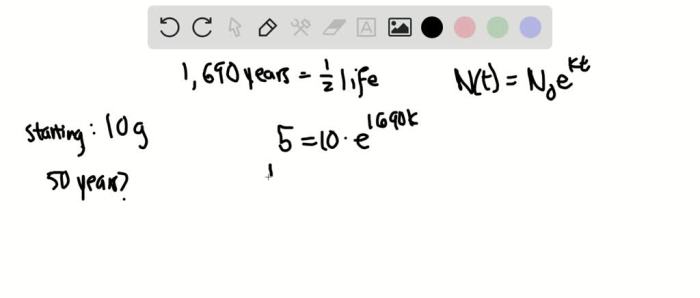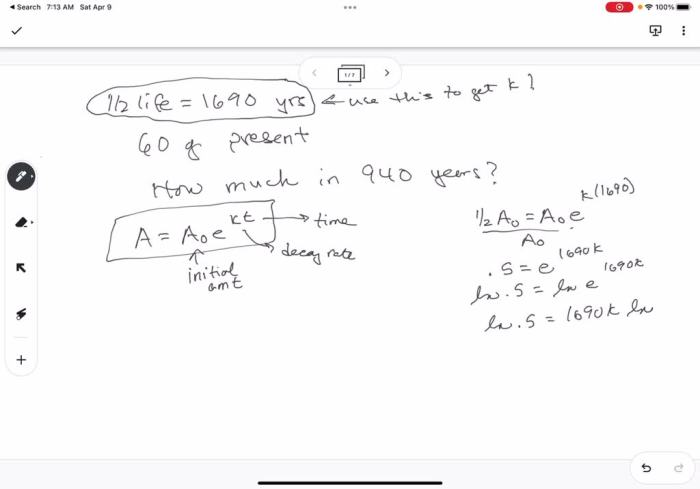The half life of radium is 1690 years – With the half-life of radium standing at 1690 years, we delve into a captivating exploration of this remarkable element. From its radioactive decay to its historical and modern applications, radium unveils a rich tapestry of scientific insights and practical implications.
This discourse unravels the intricacies of radium’s radioactive decay, delving into the concept of half-life and its profound implications. We embark on a journey through radium’s diverse applications, from its historical uses in medicine to its ongoing research and development.
Radioactive Decay of Radium

Radioactive decay is the process by which an unstable atomic nucleus loses energy by emitting radiation, transforming into a more stable nucleus. In the case of radium, the decay process involves the emission of alpha particles.
Alpha decay occurs when an unstable nucleus emits an alpha particle, which consists of two protons and two neutrons. This process results in the loss of two atomic mass units and a decrease of two in the atomic number of the parent nucleus.
Half-Life of Radium, The half life of radium is 1690 years
The half-life of a radioactive element is the amount of time it takes for half of the radioactive atoms in a sample to decay. Radium-226, the most common isotope of radium, has a half-life of 1690 years.
After one half-life, half of the radium-226 atoms in a sample will have decayed, leaving 50% of the original amount. After two half-lives, 25% of the original amount will remain, and so on.
Essential FAQs: The Half Life Of Radium Is 1690 Years
What is the half-life of radium?
The half-life of radium is 1690 years.
How is radium used in medicine?
Radium has been used historically in the treatment of cancer, particularly in the form of radium therapy.
What are the potential hazards of radium exposure?
Radium exposure can lead to health risks such as increased risk of cancer, bone damage, and radiation poisoning.


